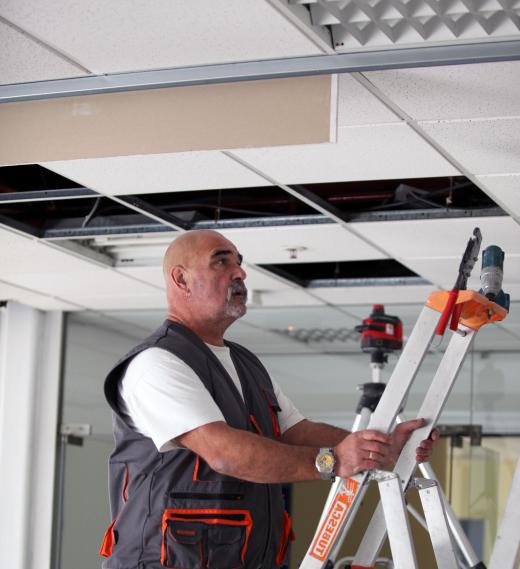Plenum cable has been manufactured to meet fire safety standards set by modern building codes for cables — both electric and communication. It is run through a building's plenums, the spaces usually above the drop ceiling where air is allowed to circulate. In most locations, including the US, safety standards require that the cable be highly resistant to flame, and when it does burn, that it emit a relatively low level of smoke and fumes. Plenum cable is commonly jacketed in Teflon®, while the cable that is run in vertical risers from floor to floor is manufactured to less stringent specifications, and is usually jacketed in cheaper PVC.
In modern construction, plenums are an integral element of a structure's design. Most American buildings are built with a standard floor-to-ceiling height of 8 feet (2.43 meters), but the actual height is usually 10 to 12 feet (3.05 – 3.66 meters), with a drop ceiling suspended below the actual ceiling to create the 8-foot ceiling. The space above the drop ceiling is the plenum. Critical components of a building's infrastructure, such as ventilation supply and return duct work, plumbing, and cables for electricity and communication, are installed in plenums. In some cases, a raised floor will create a plenum beneath it through which plenum cables are run; this is commonly found in rooms built primarily for housing computers.

The use of plenum-rated cable is an issue primarily in larger buildings where thousands of feet (meters) of cable are run in plenums. While not a significant factor when building small residential structures, the cost differential justifies purchasing both types of cable and using them where appropriate in a larger structure, such as an office tower or apartment building. The higher-rated plenum cable may be used in risers, but riser cable may not be used in plenums. The cost differential, though, justifies using riser cable for vertical cable runs, with junctions at every floor to connect plenum cables to distribute the power or signal to different locations on each floor. Care must be taken in the design of the risers and where they meet plenums to ensure that they don't take on the attributes of plenums, thus requiring plenum cable.
A growing concern among fire safety professionals is the abandonment of old cable inside a structure's risers and plenums. The upgrading of a structure's infrastructure or a tenant's IT systems frequently requires new cabling. The equipment being replaced is disconnected from its cabling and replaced, but the cable itself remains in the plenums and risers. The concern is the that older cable, manufactured to outdated fire resistance standards, may pose a fire and smoke threat even though it is no longer in use.
